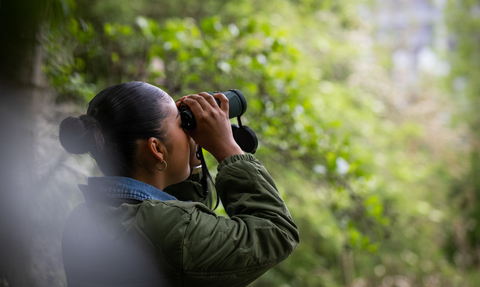
Photo credit: Eleanor Church
Birdwatching for beginners
Birdwatching is a wonderful way for anyone and everyone to connect with nature in the city. Whether it’s just outside your window, in a park or garden, or around one of London Wildlife Trust’s 36 nature reserves, birdwatching can be done almost anywhere!
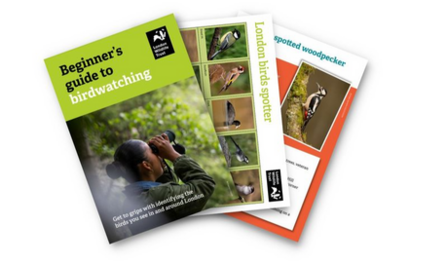
There’s nothing more satisfying than being able to identify what species you spot! If you’re new to birdwatching, our beginners birdwatching guide will give you some tips on how to get started and some of the birds you are likely to see.
Get your free birdwatching guide
To get started with birdwatching you might need:
- Patience
- Binoculars (can be helpful, but not essential)
- Bright calm weather (many birds ‘disappear’ in heavy rain)
- Practice
But the best way to begin is to just start watching! Look out of your window, get out in your garden or local park, or visit one of London Wildlife Trust’s nature reserves. And whist some birds are only visitors in the UK, many species can be spotted in London all year round.
Here are a few species you could start looking out for:
Goldfinch
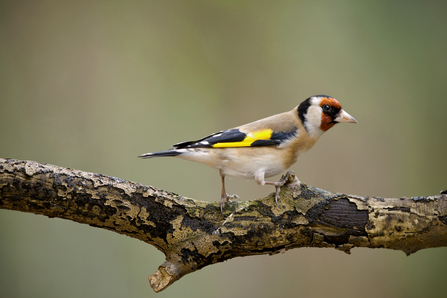
Goldfinch, photo credit: Neil Aldridge
Defining features: The goldfinch is a small, brilliantly colourful finch that is gingery-brown above and pale below, with black-and- yellow wings, a black crown, white cheeks and a bright red face. Have a distinctive rapid-fluttering undulating flight.
- Where to spot (habitat): Gardens, parks, scrub, wasteland and meadows with clumps of tall vegetation - such as teasels and thistles
- Where to spot (locations): Centre for Wildlife Gardening, Hutchinson’s Bank, Farm Bog, Yeading Brook Meadows
- When to see: All year round but some will migrate as far south as Spain to avoid the worst of the harsh weather in winter. Increasingly common due to bird-feeding in London and other conurbations
- Listen out for: A cheerful song that is often described as twittering
Pied wagtail
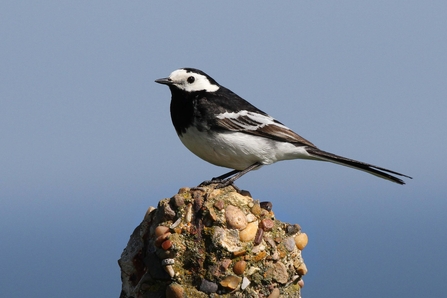
Pied wagtail, photo credit: Margaret Holland
Defining features: The pied wagtail is a familiar black-and- white bird, with a white face, white belly, and white bars on the wings.
- Where to spot (habitat): Lakes, ponds, and open water, including in parks, and slow-flowing rivers and canals, wetlands and reservoirs
- Where to spot (locations): Woodberry Wetlands, Park Road Pond, Camley Street Natural Park but any park that has a sizeable pond
- When to see: All year round, very common
- Listen out for: A loud, sharp ‘pitt’ - especially around feeding timebump
Long tailed tit
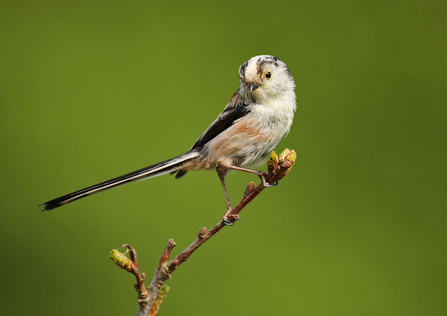
Long-tailed tit, photo credit: Jon Hawkins - Surrey Hills Photography
Defining features: The long-tailed tit does, indeed, have a long black-and-white tail that is bigger than its body. It has a black, white and pink back, a white head with a wide, black eyestripe, and a pale pink body.
- Where to spot (habitat): Woodland, scrub, parks and gardens, and other habitats where clusters of tall trees are present
- Where to spot (locations): Totteridge Fields, Crane Park Island, Ten Acre Wood, Gunnersbury Triangle, Sydenham Hill Wood, Bramley Bank
- When to see: All year round and in winter can be spotted roaming about in flocks of 20 or more
- Listen out for: A high-pitched twittering song and a call that sounds like “tsee-tsee-tsee”
Want to get to grips with birdwatching and learn to identify more of London’s birds?
